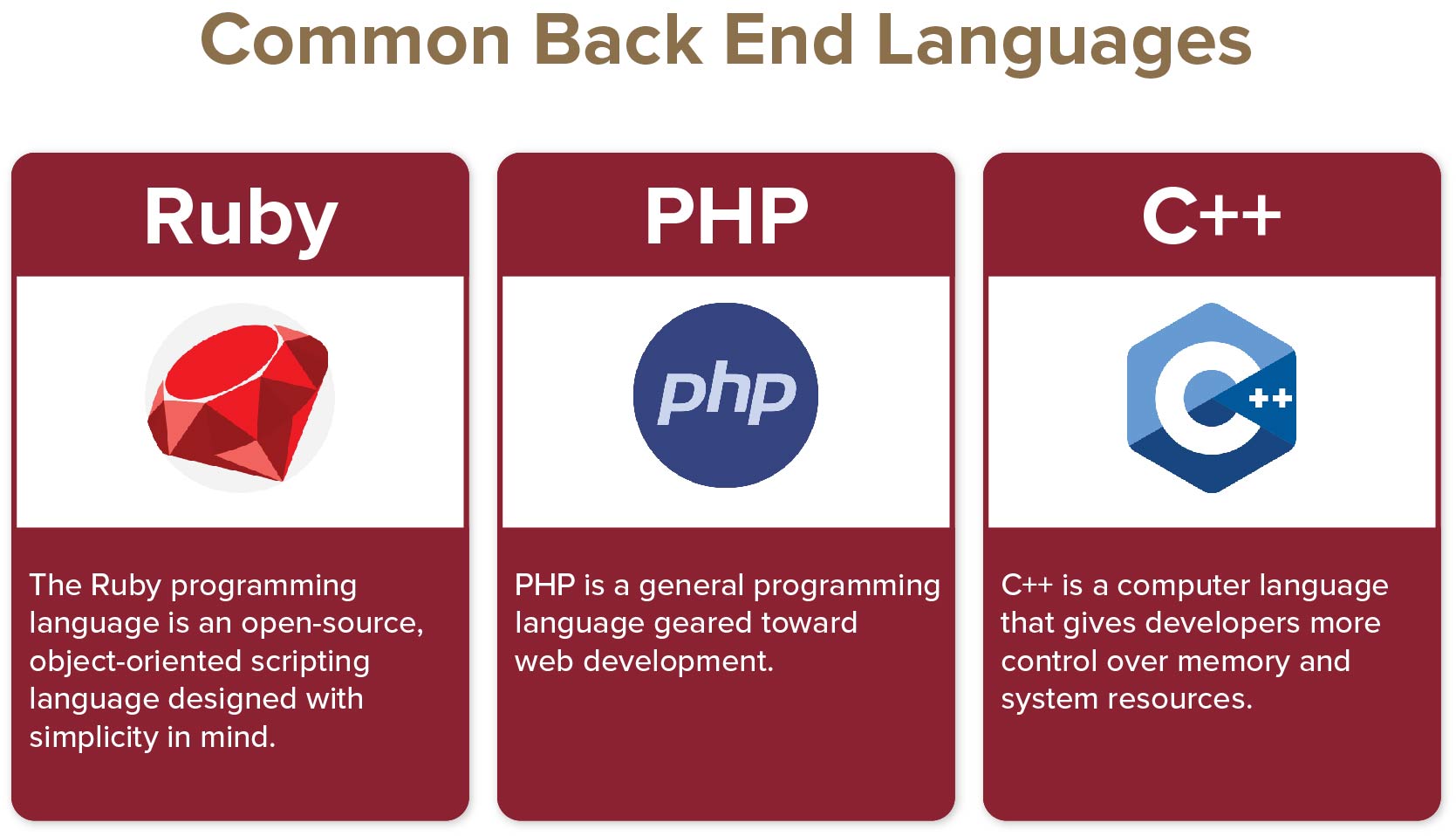Programming skills can open the door to some of the most lucrative career choices, but the prospect of mastering the languages to get there can scare people from starting the journey into web development. MySQL, CSS, Python, JavaScript — what do they mean? If you want to enter the world of programming, you’ll have to know the differences between front end and back end development, and enroll in boot camp courses to gain hands-on experience. So, how do they stack up against each other in the front end vs. back end debate?
A front end developer is responsible for what users see when they visit a website. They are the difference between a website that is inviting and one that looks like it’s stuck in 1980. Often referred to as the client- or front-facing side of the programming world, front end developer jobs are responsible for a website’s style, colors, images, and navigation menu. The front end is how a page looks, responds, and appears when a user opens up a website. This isn’t just confined to browsers; the website also has to look good and react well on smartphones and tablets.
Back end developers are responsible for creating, maintaining, testing, and debugging the entire “server,” or back end of a website. This includes the core application logic, databases, data and application integration, and other back end processes. It is their code that helps add utility to what the front end developer creates. Back end developers also ensure websites work properly when users browse, download, or upload content.
Both sides are equally important to the overall look, feel, and functionality of a website, and they need to communicate with each other for successful web development. Front and back end developers operate together to create and improve the functionality and user experience.
Most Used Programming Languages
“Je ne sais pas coder” (I don’t know how to code) may be lost on you — especially if you don’t know French. If you want to master communicating in France, Haiti, or Quebec, you’ll have to learn the language fluently. The same is true for programming languages, and the languages a front end developer uses can be different from the languages used by a back end developer. Each has to be fluent in the coding languages they use regularly, in either the front or back end of the job.
Popular programming languages like HTML, CSS, Ruby, Python, and JavaScript are some of the languages front end and back end developers use most in their craft. Intensive coding boot camps or other training courses with similar coding curricula help those looking to learn programming languages like a native (coding) speaker

 Live Chat
Live Chat

